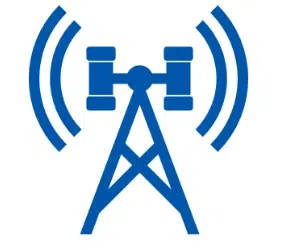Transforming Real Estate with Edge Computing through SiteBid
In the age of digital transformation, edge computing emerges as a pivotal technology, driving unprecedented efficiency and data processing capabilities closer to data sources. SiteBid Infrastructure, the nation’s premier marketplace for utility infrastructure assets, provides property owners with exclusive access to edge computing investment opportunities. Explore how integrating edge computing infrastructure can elevate your property’s technological prowess, operational efficiency, and overall value.
The Strategic Advantage of Edge Computing in Modern Real Estate
Edge computing decentralizes data processing, bringing it closer to where data is generated. This approach not only reduces latency and bandwidth usage but also enhances data security and privacy. By incorporating edge computing infrastructure into your real estate assets, you can unlock new dimensions of value, making your properties more attractive to tenants and investors in the technology and data-driven sectors.
Boosting Property Appeal with Advanced Technology
Investing in edge computing infrastructure positions your property at the forefront of technological innovation, appealing to tech companies, data centers, and businesses requiring high-speed data processing and low-latency networking. This technological edge can significantly increase your property’s desirability and market value.


Generating New Revenue Streams
Hosting edge computing facilities, such as micro data centers or edge nodes, opens up new revenue streams for property owners. These facilities are essential for supporting IoT applications, streaming services, autonomous vehicles, and other emerging technologies, offering property owners the opportunity to tap into the lucrative tech industry.
Enhancing Sustainability and Efficiency
Edge computing can also contribute to your property’s sustainability goals. By processing data locally and reducing the need to transmit data over long distances, edge computing infrastructure can decrease energy consumption and carbon footprint, aligning your investments with environmental sustainability objectives.

Why Collaborate with SiteBid for Edge Computing Opportunities?
Unrivaled Marketplace Access
SiteBid Infrastructure grants property owners access to a diverse array of edge computing investment opportunities. Our platform connects you with the latest projects and technologies in edge computing, ensuring you can find the perfect match for your real estate strategy.
Expert Guidance and Comprehensive Support
With SiteBid Infrastructure, you benefit from our deep understanding of the edge computing market and our commitment to supporting property owners throughout the investment process. From identifying potential edge computing projects to navigating the complexities of implementation, our team is here to ensure your success.
A Community of Technological Innovators
Joining SiteBid Infrastructure means becoming part of a community that includes property owners, technology companies, and infrastructure experts. This network facilitates collaboration, knowledge sharing, and the discovery of joint venture opportunities, driving innovation and success in the edge computing space.
Elevate Your Real Estate with Edge Computing
Embrace the future of technology by integrating edge computing infrastructure into your property investment strategy with SiteBid Infrastructure. Whether you’re looking to host edge data centers, deploy edge nodes, or explore other edge computing solutions, our platform is your gateway to unlocking new value in the digital era.
Contact us today to explore how edge computing can transform your property and position you as a leader in the next wave of technological advancement.
Edge Computing FAQ’s
What is Edge Computing?
In the rapidly evolving digital world, Edge Computing stands out as a transformative technology that brings data processing closer to the source of data generation. Unlike traditional cloud computing, which relies on centralized data centers, edge computing processes data at the “edge” of the network—near or within the devices themselves. This approach minimizes latency, reduces bandwidth use, and enhances the efficiency of data handling in real-time applications.
How Does Edge Computing Work?
At its core, edge computing involves a network of micro data centers that process critical data locally and push non-essential data to a central data center or cloud storage solution. This mechanism enables faster response times and better bandwidth management. By leveraging local computing to analyze and process data, edge computing supports real-time applications like autonomous vehicles, IoT devices, and smart city infrastructure, making them more efficient and reliable.
Benefits of Edge Computing
Edge computing offers several key benefits:
- Reduced Latency: By processing data closer to its source, edge computing dramatically cuts down the time it takes for devices to respond to data inputs, essential for real-time applications.
- Bandwidth Savings: Local data processing reduces the need to send vast amounts of data across the network, saving bandwidth and reducing associated costs.
- Enhanced Security: Processing data locally can improve security measures by minimizing the exposure of sensitive information to potential vulnerabilities across the network.
- Scalability: Edge computing allows organizations to scale their operations flexibly, adding more edge devices and computing resources as needed.
Applications of Edge Computing
Edge computing is revolutionizing various sectors, including:
- Manufacturing: Real-time machinery monitoring to predict maintenance needs and prevent downtime.
- Healthcare: Immediate data analysis for wearable devices and remote monitoring systems, improving patient care.
- Retail: Enhanced in-store customer experiences through personalized offers and streamlined inventory management.
- Smart Cities: Improved traffic management and energy usage through real-time data analysis.
Challenges and Considerations
While edge computing presents numerous advantages, it also comes with challenges, such as:
- Security Risks: The increase in the number of edge devices broadens the attack surface for potential security threats.
- Hardware Dependency: The effectiveness of edge computing can depend on the capabilities of the local devices and infrastructure.
- Management Complexity: Deploying and managing a vast network of edge devices can be complex and resource-intensive.
Future of Edge Computing
The future of edge computing is bright, with continuous advancements in technology enhancing its capabilities. Innovations in AI and machine learning are expected to further boost the efficiency of edge computing, enabling even smarter data processing and decision-making at the edge. As 5G technology becomes more widespread, the potential for edge computing across industries is set to skyrocket, promising a new era of ultra-fast, reliable, and intelligent computing solutions.
Edge computing represents a significant shift in how data is processed and utilized across various industries. By bringing computing closer to the source of data, it offers improved performance, reduced latency, and enhanced security, driving innovation and efficiency in real-time applications. As we look to the future, the role of edge computing in shaping the next generation of technology solutions is undeniably crucial.
Interested in leveraging edge computing for your business? Contact us to explore how our edge computing solutions can transform your operations and drive growth.
